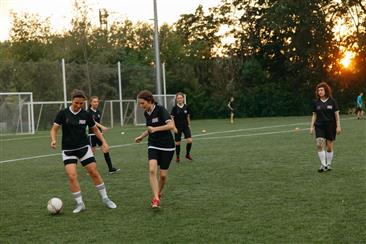
For decades, women’s sports operated in the shadow of their male counterparts—underfunded, underpromoted, and often overlooked. That tide, however, has been turning. What once felt like isolated breakthroughs are now part of a broader shift: the steady rise of women’s sports leagues around the world. From football pitches to basketball courts and cricket fields, women athletes are commanding larger audiences, attracting major sponsors, and reshaping the global sports landscape.
This change hasn’t happened overnight. It’s the result of years of advocacy, policy reform, grassroots support, and the sheer determination of female athletes who refused to be sidelined. What we’re witnessing now is not just a moment—it’s a movement.

A Tipping Point Years in the Making
In many ways, the groundwork for today’s growth was laid by historic milestones. Events like the 1999 FIFA Women’s World Cup in the U.S., where over 90,000 fans packed the Rose Bowl to watch the final, proved that interest in women’s sports wasn’t niche. Similarly, the success of Serena Williams, Simone Biles, and Megan Rapinoe in their respective disciplines provided visible, dominant role models for a new generation.
The real transformation, however, is happening at the league level. The Women’s Super League (WSL) in England, the National Women’s Soccer League (NWSL) in the U.S., and the Women’s Big Bash League (WBBL) in Australia are just a few examples of professional women’s leagues gaining traction. These organizations are securing media rights deals, expanding their fan bases, and increasing player wages—signs that point toward long-term stability rather than temporary enthusiasm.
Media and Commercial Breakthroughs
A key driver of this rise has been the evolving relationship between women’s sports and media. For years, the lack of visibility was a self-perpetuating problem: networks didn’t broadcast women’s games because they claimed there wasn’t an audience; fans couldn’t watch because the games weren’t shown. That gap is finally narrowing.
Streaming platforms and social media have bypassed traditional gatekeepers, allowing leagues to build their own audiences. In 2022, the NWSL signed a landmark broadcasting deal that included major networks and digital platforms. The English WSL’s agreement with the BBC and Sky Sports ensured millions could follow their favorite teams weekly. These deals don’t just bring revenue—they signal legitimacy.
Sponsorship has followed closely. Brands increasingly recognize the value of associating with female athletes who embody skill, resilience, and relatability. Big names like Visa, Nike, and Barclays have aligned themselves with women’s teams and leagues, providing financial stability and helping to close the glaring gap in pay and resources.
Cultural Shift in Representation and Perception
The rise of women’s sports leagues is also reshaping societal attitudes. For decades, sports culture was overwhelmingly male, both in participation and viewership. Now, girls are growing up with female athletes as role models on the same stage as their male peers. Representation matters—not just for young aspiring athletes, but for the broader culture. It challenges outdated ideas about gender, strength, and capability.
Moreover, women’s leagues often emphasize values that resonate with modern audiences: inclusion, community involvement, and a less commercialized atmosphere. Fans are drawn not just to the quality of play, but to the values the leagues represent. That authenticity is hard to manufacture and increasingly rare in the corporate-dominated world of elite sports.
Global Reach and Local Impact
This is not just a Western phenomenon. Women’s leagues are gaining momentum globally. In South America, the Copa Libertadores Femenina is growing in popularity. India has launched a women’s Premier League in cricket, a bold step in a country where the men’s game dominates. African nations are investing in national women’s programs, particularly in football, with players like Asisat Oshoala becoming international stars.
At the local level, these leagues are influencing how communities view sports. They provide jobs, foster civic pride, and offer healthy role models. Youth participation in girls’ sports has increased in countries that invest in women’s professional leagues, creating a virtuous cycle of growth and engagement.
The Battle for Equality Isn’t Over
Despite the progress, major challenges remain. Pay disparities are still glaring. In many leagues, even top-tier female athletes earn a fraction of what their male counterparts make. Facilities, travel budgets, and media coverage are often inferior. While attitudes are changing, the structural inequalities that kept women’s sports marginalized for so long haven’t fully disappeared.
FIFA, for example, has faced criticism over prize money disparities between the men’s and women’s World Cups. Even in countries that pride themselves on gender equity, female athletes frequently have to fight for basic support.
There’s also the issue of burnout and career longevity. Many women athletes juggle dual careers or rely on short-term contracts without the security that male athletes enjoy. Creating a viable career path in sports for women—from youth levels to retirement—requires institutional backing, legal protections, and a commitment to equity at all levels.

What Comes Next?
The continued growth of women’s sports leagues depends on a few key factors: long-term investment, equitable governance, and fan engagement. But it also relies on how the broader sports ecosystem adapts. Will traditional sports media give equal airtime to women’s games? Will governing bodies enforce fair pay standards? Will schools and youth organizations prioritize access for girls?
The signs are promising. Viewership numbers are rising. Stadiums are filling. Merchandise is selling out. Perhaps most importantly, the conversation has shifted. No longer is support for women’s sports framed as a moral imperative—it’s now also good business. And that, more than anything, may be the lever for lasting change.
Conclusion
The rise of women’s sports leagues is one of the most transformative shifts in the global sports landscape in recent decades. What was once peripheral is now central to conversations about business, culture, and identity in sport. It’s not just about the athletes on the field—it’s about the millions of people watching, cheering, investing, and believing.
The momentum is real. The impact is global. And this time, it’s not going away.



